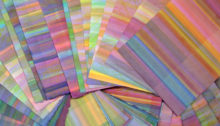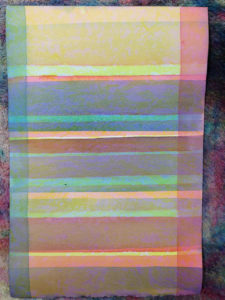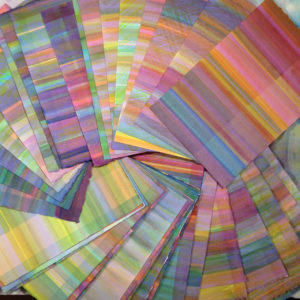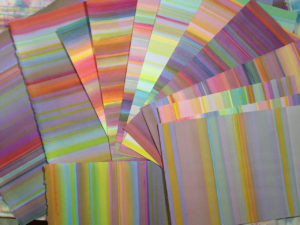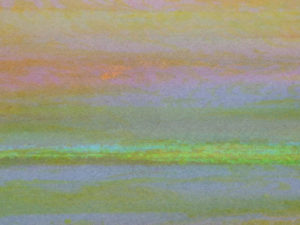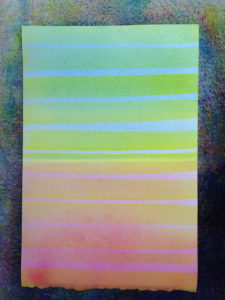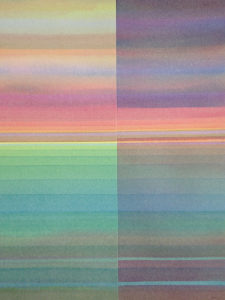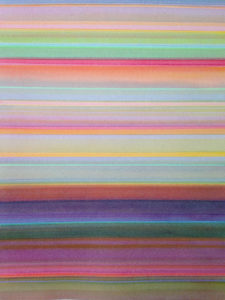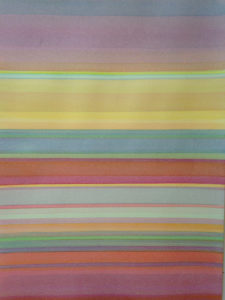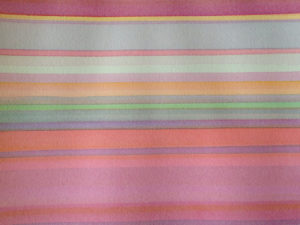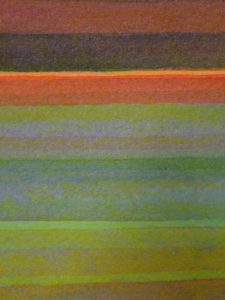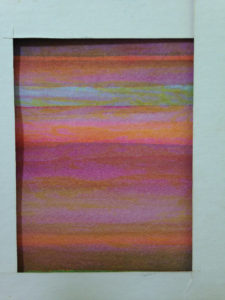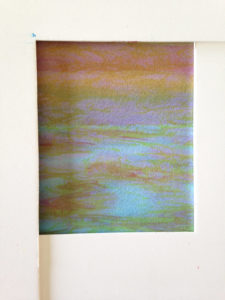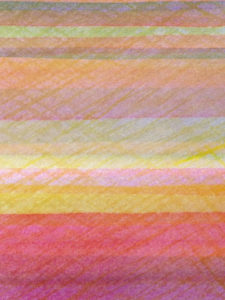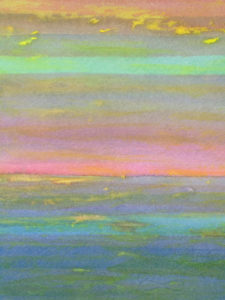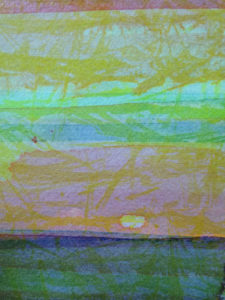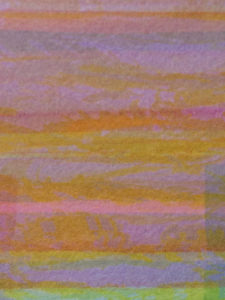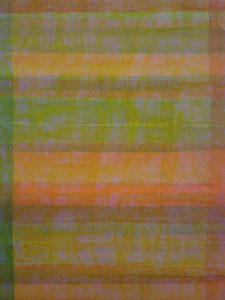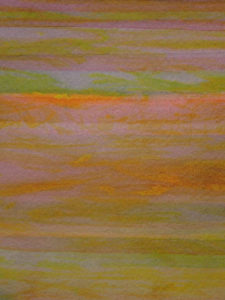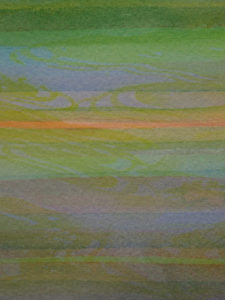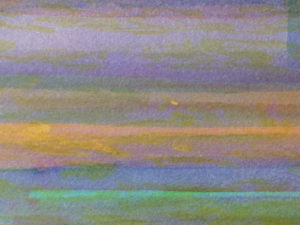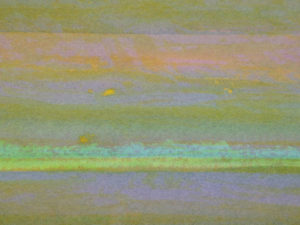At Dick’s request, Valérie Richter shares words and images from a year-long exploration of luminosity. Enjoy!
I have always been fascinated with color and I like to constantly learn. After taking Dick’s Tri-hue Watercolor class and then the Color Relationships class, I truly believed that he was teaching something that would open a new world for me, to see color and create color relationships as I had never done before.
After taking those two classes I got very curious and decided to give up my 150 tubes of watercolor paint and just use the primary cyan, magenta and yellow, and start searching for the luminosity that Dick talks about. Armed with three tubes of paint, I began my journey.
My first attempts, to apply his method in painting flowers and landscapes, weren’t very successful. Dick encouraged me to put aside shapes, subject matter, and composition, and focus for awhile on painting color for color’s sake, by simply painting stripes. As we have heard him say many times, “discard the precious stones for the time being and take on some stepping stones”.
As I started these stripe studies I had a list of themes/tools Dick had introduced in class: vanishing boundaries, halation, tone, values, color themes, film, veil, gradation, harmony, how to affect one color with another one, and “what if”… I would pick one or two at a time, to avoid getting lost by trying to do everything at the same time.

As I instinctively put colors together to see the results, sometimes it came out to be a really fascinating color relationship that I had never achieved before, and sometimes it didn’t turn out anything at all like I thought it would.
I learned I needed to go through those mistakes and not think of a mistake as just a mistake. I needed to go through the mistakes and learn from each one. Until I could, in my way, be able to control those colors to get the various color relationships I wanted, try to repeat them, register them and add them to my “toolbox”.
I admit, it was hard sometimes to stick to one theme/tool or technical effect, and not be influenced by my color likes and dislikes.
Dick also reminded me regularly of the importance of cropping, as it was unrealistic to expect perfect harmony on a full sheet while doing these studies. Cropping allowed me to isolate and see the color interaction better.
This took a lot of dedication, passion and time, plus of course Dick’s expertise, teaching skills, guidance and patience to let me discover things through my own experience instead of revealing them to me. All this is allowing me to make it my own. He is truly a great teacher, in the best sense of what teaching is.
Looking back now at my first studies, after applying myself for a year at painting stripes of color, I realize that I was oblivious at the time to already getting some vanishing boundaries, halation, and special relationships. I wasn’t recognizing them.
Dick’s encouragement to forget about doing a complete painting has caused me to not only paint the colors, but to see the colors. It makes me appreciate those accidental tones I was getting since I realize now how hard it is to get them.
As I look back over the past year’s studies I am excited at all that I have learned and accomplished and look forward to continuing exploring color. After much repetition it begins to stop being an accident and continues to grow until you cannot not do it. It is very hard to explain what happens as you practice; it is a mixture of technique and feel. The feel can’t be taught. It has to be experienced.
As I begin now to add shapes to my studies, I realize I have a long way to go, but that’s okay because I am enjoying the journey, and there is no end to it.
